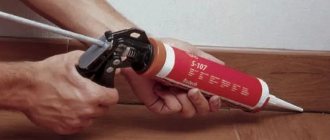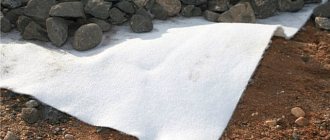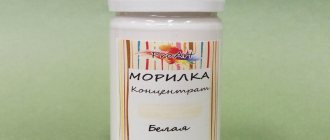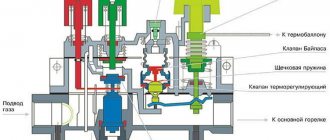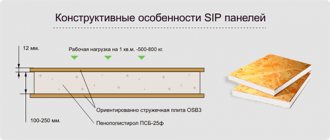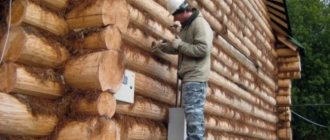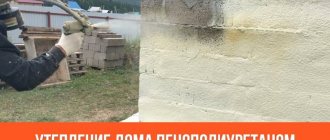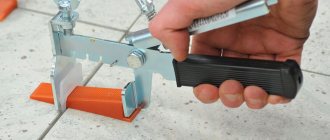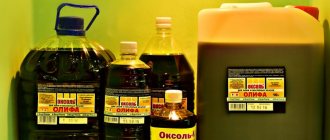Most likely, there is no person who has not seen foam rubber. It is a plastic mass that can be given any color using a variety of dyes. Its development is carried out at a precisely prescribed weight. The slightest error is not allowed, otherwise it is considered defective and is not allowed for sale. But this begs the question, what kind of insulation is it? Polyurethane foam, as an insulation material, is not bad in itself; in many ways it even surpasses other types of insulation. The main thing to note when choosing foam rubber as insulation is that it is an inactive material and does not react in its composition with the outside world. The properties of foam rubber directly depend on the flexibility, density of the material, and elasticity.
General information about foam rubber and insulation
When researching the issue of thermal insulation of an apartment, it is important to familiarize yourself with certain qualities of materials. Their abundance on the construction goods market exceeds the norm; it is easy to get confused in the assortment. When choosing an insulation product, you should pay attention to the product description. His main tasks in winter:
- Do not allow the cold to penetrate the walls;
- Preserve existing heat in rooms;
- Gradually minimize fuel use or electricity consumption.
Based on the above functions, two categories of insulation materials are considered:
- Used inside the house;
- Used for finishing external walls.
The first option is designed to eliminate excess external noise and maintain sound insulation. Internal insulation is often “built” into a plasterboard structure. It is appropriate for a beautiful appearance of the house that does not require additional finishing. When sheathing the walls, the lining of ecowool or foam rubber in the metal profile construction will not be superfluous.
Experts note significant shortcomings in interior wall decoration:
- lack of high-quality protection of walls from the cold;
- insufficient heat retention in multi-storey buildings;
- significant reduction in room area.
The second method is appropriate when building a house from cinder block materials. Exterior decoration can improve the façade of a building, give it an aesthetic appearance and save the budget for finishing the entire house. The disadvantages of external insulation are sensitivity to external factors and the need for additional stone cladding. According to its characteristics, the second option resembles a kind of “fur coat” of a house. During the cold season, this option is appropriate and can retain heat in the building. In hot weather, you will need to buy an air conditioner and constantly cool the rooms.
Material advantages
- Polyurethane foam can be used on any surface: paper, brick, wood, metal, tile, concrete.
- Not afraid of bends and uneven bases.
- “Indifferent” to sudden changes in temperature and humidity.
- Once applied to a plane, the structure has no seams or joints, which prevents heat loss.
- Window and wall foam rubber can be applied already at the construction site during the construction of structures or during life, when the need has arisen to make repairs outside or inside the building.
- Does not allow frost to penetrate inside the building.
- Able to retain heat already accumulated in the house.
- Minimizes fuel consumption and energy consumption in winter (heating boilers) and summer (air conditioners and split systems).
Polyurethane foam insulation: properties of foam rubber
According to Wikipedia, polyurethane foam is foam rubber. The name corresponds to the entire group of insulation products containing carbonate gaseous particles moving according to an inert principle. They are airy and light. Consumers owe the name “foam rubber” to a foreign construction company from Norway, which designated this material.
Qualities worth considering:
- Density ranges from 30 to 150. Calculation is made in kilograms per cubic meter.
- The ability to conduct heat is from 0.019 to 0.028 W/m.
- Despite the airiness of the structure, foam rubber has a closed porous base.
- Usage time is approximately 25 years.
- The permissible degree of exposure of the material is from minus 150 to plus 150.
The structure of foam rubber shows that it has soft qualities. Not afraid of bends. Sensitive to weight loads. You should not put polyurethane foam under pressure - it will quickly lose its properties useful for insulation and may shrink and lose density.
One of the qualities of foam rubber is its ability to conduct heat. According to its structural characteristics, the material can transmit cold by 0.2 centimeters. When purchasing 0.5 or 1 centimeter, the walls will be sufficiently insulated and reliably protected from frost. Thickness affects the cost in direct proportion. Based on the climate of the area, you can choose the most appropriate and budget-friendly option.
Polyurethane foam has a solid surface. Its pores are closed with a special layer. The carbon fiber included in the structure supports the “life activity” of the foam rubber, ensuring its long service life.
Modern insulation materials can be used for at least half a century. Construction manufacturing companies have developed a special scheme for cleaning the structure. This is possible with the presence of a large number of gaseous components. The entire high-quality monopoly for the production of durable polyurethane foam is concentrated in the East - in Japan.
A distinctive characteristic of foam rubber must be its “indifference” to temperature changes. It copes well with bitter frosts and is not picky in the heat. It does not have the ability to cool or heat up. A significant disadvantage is the ability to ignite and burn well.
The presence of inert gases contributes to the charring of carbon. Combustion of foam rubber can only occur under the influence of an open source of fire. Experts strongly recommend checking the strength of the material before purchasing.
Impact on human health
The constituent elements of polyurethane foam can have a negative impact on human health in many ways. The chemical elements of foam rubber have a destructive effect on the respiratory tract. In certain cases, “volvulus” was observed.
It is strongly recommended to keep children away from this raw material. Foam rubber does not tolerate acids and alkaline elements. Its use is prohibited in factories and many businesses. Does not cause oxidation when reacting with detergents.
Tepofol NPE - Foil-coated (Foil) on one side / Metallized (Lavsan) on one side
Name
| Thickness | Dimensions | Square | Photo | Price per m2. | |
| Tepofol 2mm foiled on one side | 2mm | 1.05mx50m | 52.5m2 | Photo | 18 |
| Tepofol 3mm foil on one side | 3mm | 1.05mx50m | 52.5m2 | Photo | 19,5 |
| Tepofol 4mm foil on one side | 4mm | 1.05mx50m | 52.5m2 | Photo | 22.5 |
| Tepofol 5mm foil on one side | 5mm | 1.05mx50m | 52.5m2 | Photo | 24,5 |
| Tepofol 8mm foiled on one side | 8mm | 1.05mx25m | 26.25m2 | Photo | 35 |
| Tepofol 10mm foiled on one side | 10mm | 1.05mx25m | 26.25m2 | Photo | 38 |
| Tepofol 15mm foil on one side | 15mm | 1.05mx25m | 26.25m2 | Photo | 115 |
| Tepofol 20mm foil on one side | 20mm | 1.05mx25m | 26.25m2 | Photo | 125 |
| Tepofol 30mm foiled on one side | 30mm | 1mx2m | 2m2 | Photo | 185 |
| Tepofol 40mm foiled on one side | 40mm | 1mx2m | 2m2 | Photo | 240 |
| Tepofol 50mm foiled on one side | 50mm | 1mx2m | 2m2 | Photo | 280 |
Foam insulation for pipes - All about insulation and energy efficiency
What materials to choose for insulation
An important quality of insulation is ease of installation.
Depends on the type of pipeline (sewerage, water main, heating main) and the location of the line:
- Airborne. Weather resistant materials are required.
- Underground. Moisture-resistant heat insulators that are unattractive to rodents are used.
- Underground. A thermal insulation material is required that can withstand soil pressure.
To calculate the volume and cost of the required insulation materials, you can use the thermal conductivity table showing the most common thermal insulation materials:
Density and thermal conductivity coefficients of insulation materials.
| Insulation | Thermal conductivity, W/ (m*K) | Density,(kg/m3) |
| Dry coarse sand | 0,35 | 1600 |
| Expanded clay | 0,18-0,1 | 800-200 |
| Wood (dry) sawdust | 0,070-0,093 | 230 |
| Mineral wool | 0,07-0,048 | 200-50 |
| Glass wool (glass wool) | 0,035-0,070 | 200 |
| PVC foam | 0,052 | 125 |
| Expanded polystyrene | 0,05-0,031 | 150-33 |
| Woolen felt | 0,047 | 300 |
| Polyurethane foam | 0,041-0,023 | 80-32 |
Characteristics
It is impossible to purchase a foam rubber seal if you do not know its dimensions and technical characteristics. The first thing to note is the complete environmental safety of the material. Its density reaches 20 g/m3. It has a low thermal conductivity coefficient, which makes it possible to insulate window openings and make the room comfortable to live in. Another undoubted advantage of the material is the wide range of sizes, thanks to which you can choose the appropriate option and save on costs.
Table 1 - Dimensions of foam seals
| Size, mm | Length, m |
| 20x20 | 10 |
| 20x30 | 10 |
| 20x40 | 10 |
| 30x30 | 10 |
The use of foam rubber in facade insulation
Foam rubber is often used in facade systems for insulation and cladding with metal siding.
This is due to the fact that foam rubber has greater thermal conductivity than stone wool and a lower specific gravity.
As a result, the gaps between the siding and the facade of the house are reduced by 30%, since foam rubber can fill almost any, even the smallest, gap.
The disadvantages of thermal insulation material can be neutralized in some simple ways. Foam rubber is susceptible to destruction under the influence of moisture and sunlight. Therefore, if you exclude the formation of gaps between the siding elements, then you can protect the foam rubber from destruction.
The most popular type of foam insulation
Most often, foam rubber is used as insulation for window frames and doorways.
Sealing seams is an effective way to retain heat in a room, so this method is often used to create a favorable temperature and reduce heating costs.
To insulate windows and doors, you will need to buy strip foam rubber, which has an adhesive bottom layer.
Therefore, it is important to do it very quickly and not at all burdensome.
To do this, you need to remove the protective film from the bottom layer, stretch the foam tape and fix it on the opening, pressing with your fingers.
It is not recommended to tear off the protective strip, as you can damage the bottom layer, which will not stick well.
It is better to gradually, in small parts, separate the film and cut it off with scissors.
All thermal insulation materials have their own advantages and disadvantages, so it is difficult to say which one is better or worse; everyone chooses the most acceptable for themselves.
Thermal insulation based on foam rubber
In the photo there is insulation for pipes
Elastic polyurethane foam or foam rubber are the names of foamed polymers with a very diverse range of applications.
The versatility of using this material is explained by its following qualities:
- Low degree of thermal conductivity;
- The ability to maintain the original shape and dimensions under mechanical stress;
- Light weight;
- Ease of machining;
- Low cost.
Manufacturing process
Foam rubber used for heat and sound insulation of door leaves
The above characteristics of foam rubber are laid down at the production stage.
The production process is carried out using two methods:
- periodic (“box”) production;
- continuous production.
The periodic type of foam rubber production is the oldest, as it dates back more than 50 years. The essence of the technique is that a portion of the components is poured into a mold, the side walls of which, upon completion of the formation of the required volumes of foam, open.
After this, the workpiece is cut into sheets or strips. According to statistics, materials made in this way are not characterized by the highest quality indicators.
A more common production method is the continuous production of foam blocks up to 60 meters long. The advantage of this method is the production of a workpiece, from which slabs or strips of the required length and width are subsequently cut. The quality indicators of such products are an order of magnitude higher than those of foam rubber made using “box” technology.
Depending on the selection of components (polyols, melamine and fire retardants) and on the time of settling of the mixture, the following material qualities are formed:
- tensile rigidity;
- tensile strength;
- softness (elasticity);
- cell size;
- breathability and, as a result, thermal conductivity.
Use as insulation
The photo shows the thermal insulation of a metal entrance door
As already mentioned, elastic polyurethane foam is characterized by a wide range of applications, which is explained by one or another of its performance qualities. For example, foam insulation is most often a material with a small cell size, low air permeability and a limited degree of thermal conductivity.
Such thermal insulation materials are equally relevant when insulating both individual buildings and public buildings and industrial facilities.
So, let’s take a closer look at the materials that we can use in an apartment or in a country house.
Window seal
Foam rubber for insulating an apartment or house is used in the form of strips or sheets.
Penofol
About the manufacturer
Penofol is a brand produced by LIT Plant, which was founded in 1979. The company was the first in Russia to begin applying a reflective layer of foil to the surface of foamed polyethylene. Thanks to this fact, the Penofol trademark is widely known in the Russian market.
Very often, the consumer calls penofol any insulation made of foamed polyethylene with a reflective surface. And this despite the fact that in Russia there are about 30 similar manufacturers with their own brands.
The main activities of the enterprise are:
- production of energy-saving materials based on polished aluminum foil, operating on the principle of reflecting heat flow (reflective thermal insulation), intended for insulation of enclosing structures of residential and industrial buildings;
- production of materials from foamed polyethylene intended for technical thermal insulation of heating and water supply, ventilation and air conditioning systems, for use in “warm floor” systems, as well as for protecting thermal insulation from mechanical damage, atmospheric influences and ultraviolet radiation.
The company is successfully developing and producing products for various purposes under the trademarks: PENOFOL, TILIT, ARMOFOL, TITANFLEKS, used in construction.
About products
A distinctive feature of Penofol is its blue color. In principle, only foil is used as a reflective layer. Excellent quality material with an adhesive layer, one of the best on the market, if not the best.
Since 2015, LIT Plant began producing the updated Penofol material with additional protection against counterfeiting - a hologram, which is printed on both sides on polished aluminum foil.
pros
PPU in cylinders has the following advantages:
- Savings on transportation . Cylinders can be transported in a regular passenger car: there are no special precautions in this regard.
- Light weight . The finished hardened thermal insulation is so light that even with mass use it does not cause weight to building structures or increase the load on the foundation. This opens up great opportunities for insulating areas of a building with limited support (for example, roofs).
- Monolithicity . When hardened, polyurethane foam creates a dense, seamless surface. The absolute absence of joints and transitions protects the home from heat leakage to the outside and moisture from entering inside.
- Environmental Safety . Sprayed thermal insulation contains no components harmful to people and the environment.
- There is no need to equip load-bearing frames . In terms of ease of installation, sprayed polyurethane foam is superior to mineral wool, polystyrene foam and other traditional materials.
- Excellent adhesion . The substance “sticks” well to almost any building base. After hardening, it can be painted or plastered.
- Resistant to climatic and chemical influences . Polyurethane foam is not afraid of temperature fluctuations, direct exposure to moisture or aggressive chemicals. It, unlike other insulation materials, does not need to be equipped with vapor or waterproofing. This explains the significant service life - up to 50 years.
- High level of energy saving . In this regard, the material is superior to the popular mineral wool.
- Low requirements for installer qualifications . Any beginner can master laying polyurethane foam in cylinders: its application is very similar to working with polyurethane foam. The presence of several nozzles in the set allows you to cover surfaces of various shapes (including uneven or angled ones).
- Biological inertia . PU foam does not rot and does not attract the attention of harmful insects and small rodents.
It is important for beginners to remember that despite its high adhesive qualities, it is advisable to lay polyurethane foam on a prepared base. It must be cleaned of dust, dirt, and flaking fragments. If there are oil stains, degrease the surface.
PPU spraying technology
This method of applying material to a surface, known as spraying , allows you to easily process the most geometrically complex and hard-to-reach surfaces. Such liquid thermal insulation provides a seamless thermal insulation layer that adheres tightly to the surface even where laying thermal insulators in the form of slabs is impossible.
Spraying polyurethane foam forms foam, which, after hardening, does not crack or shrink. Since the layer is moisture-proof, no further waterproofing or vapor barrier is required. Wind also does not enter the house after applying this layer.
The method is relatively simple and does not require physical stress . Through a nozzle, liquid insulation is blown onto any areas of the structure. It is important that it does not weigh them down, since the applied thin layer also has little weight.
The density of the composition can be changed by changing the selection and dosage of components. The temperature of the composition should be 10-25°. A minimum of +5° is required indoors, otherwise the solution must be heated. The ambient temperature should not be higher than +40°.
Before you start the process itself, you need to tidy up the surface . It must be cleaned of all possible contaminants and dried thoroughly. The metal is cleaned of rust and degreased. Aluminum is coated with a highly adhesive primer to increase adhesion.
Components are poured into the tanks of the spraying installation , which are then fed into the spray gun. The compressor pumps air and mixes the components, spraying them under pressure. Thanks to a chemical reaction, the mixture foams when it hits the surface and hardens in just a few minutes.
The composition completely hardens within a day , after which you need to remove the excess with a sharp knife. The next layer is applied only after the previous one has completely hardened.
Despite the safety and environmental friendliness of the frozen mass, it is recommended to work in a protective suit when mixing and applying it. This is especially important for the eyes and respiratory organs.
On the floor
Spraying of polyurethane foam in residential premises is carried out very rarely, despite the harmlessness of polymers after polymerization. This happens due to the appearance of some mustiness in the room due to the low vapor and moisture permeability of the material. PPU thermal insulation will be appropriate if the house has the following conditions :
- equipped with a warm basement;
- ground floor available;
- floor coverings are on joists.
The advantage of a floor covered with polyurethane foam is that rodents or insects will not get into the room from the basement. It is convenient that additional waterproofing is not required - polyurethane foam can successfully cope with this.
On the walls
The material is sprayed onto a pre-prepared wall in one or several layers, if hydro- and sound insulation is required.
The material is sprayed inside and outside, but when applied externally it is necessary to protect it from exposure to UV rays . This can be done using drywall sheets or paint with a UV filter.
To the ceiling
PPU applied to the ceiling performs three tasks to ensure the microclimate in the house:
- being a sound insulator, it will ensure silence in the house even in the heaviest rain;
- In winter, on cold days, the rooms will be warm due to the seamless nature of the material : heat rises up and falls down, without finding a way out;
- In summer, heated air will not be able to enter the room from outside, maintaining coolness and comfort.
The ceiling is insulated in a wide variety of construction projects: industrial, commercial, residential, both private and apartment buildings, and other buildings.
Before applying the material, it is necessary to carry out preparatory work : cover everything that has already been cleaned with polyethylene, remove dust and dry the surfaces, make sure that all communications are installed before work. If the ceiling of the first floor, above which there is a second or attic, is insulated, the layer should be 35 mm thick. If this is a flat roof ceiling, the insulation must be at least 80 mm. In general, the thickness of the layer depends on the density of the composition.
After application, it is necessary to clean the logs from any foam that has fallen in and finish them with plasterboard or clapboard. Over the entire 30-50 years of operation, the properties of the material will not change.
On the roof
Polyurethane foam for roof insulation is primarily good because it does not require the installation of a special frame and does not require fasteners. The surface of the structure does not need to be further prepared, just remove dust. The material adheres well to any type of surface: concrete, metal, wood. Vertical and horizontal roof structures are covered with equal quality.
A well-insulated roof will reduce heat loss by 15% .
The presence of complex sheathing or laid utility lines will not complicate the work. In addition, the rooms located above will be protected from moisture entering through the attic floors.
Disadvantages of foam rubber
It also has its shortcomings.
Foam rubber does not last a relatively long time. When compared with other materials, foam rubber lasts several years less. It begins to peel off and deteriorate earlier. It also catches fire very easily and produces toxic substances. In addition to insulation, foam rubber is widely used in various areas of development. You can find it in soft toys, furniture, hats, shoes and others. It's also in every office chair you sit on. Foam rubber can now be bought literally at every step. It is so widely used in everyday life, which means it must be of good quality. Therefore, we use foam rubber from foreign markets. The raw materials for its production are brought to us in large quantities and their quality is very high. This quality indicates that the foam rubber will last longer, will not collect dust, and it is clear that it will not cause any harm to your health. Because the environmentally friendly substance does not cause any allergic reactions to the human body.
Double-sided foiling
- Energofol
- Ventilated space
- Interior decoration
- Rail
Energofol thermal insulation materials are installed between the outer wall and the finishing (both on the outside and on the outside). In this case, it is necessary to leave a space of 7-20 mm in front of the reflective surface of the material from adjacent surfaces. This is done to effectively use the properties of heat-reflecting materials. In the case of using a material with one-sided coating, the material is attached to a wall with a non-laminated surface using small nails, a furniture stapler, Akrol contact adhesives (TU OP 2241-001-32998988-97), Neoprene 2136 aqua spray, 88-NP glue . Or double-sided adhesive tape. After installation, the joints are sealed with aluminized tape (overlapping installation is acceptable). Then, a formwork made of slats 7-20 mm thick is mounted on the heat-insulating material, onto which the finishing material (plasterboard, lining, etc.) is attached. The layers of isolated air created in this way are a good additional heat insulator and steam outlet.
Installation of an insulator with a double-sided reflective coating is carried out on slats (7-20 mm thick) attached to the wall. The joints are glued with aluminized tape (overlapping installation is acceptable). Then, a second row of slats is laid on top of the heat insulator, onto which the finishing material is installed.
When using materials with a double-sided reflective layer, a pleasant microclimate is always maintained in the room. Cool in summer, warm in winter.
Wall treatment with polyurethane foam
The material is sold in a solid state in the form of plates. Can also be distributed in liquid. When talking about liquid properties, don’t imagine containers with jars. In construction stores it can be purchased in an intermediate state between liquid and solid. In quality it resembles plaster. It should be applied with a special spatula. Most recommendations boil down to the use of spray devices.
When applied to the surface of a cinder block, the spray method will work great on cracks and cover the entire space. An interesting property of foam rubber is that when hardened, it increases its size by up to 40 percent. It is necessary to wait for final drying after one and a half days.
Comparing polyurethane foam and foam rubber, we can call them identical. The expert opinion of professionals indicates a greater number of advantages in the first option:
- No use of adhesives;
- Covering absolutely the entire surface of external walls;
- Efficiency of the process using a sprayer.
Insulation of walls with ecowool
Ecowool differs from mineral wool in its increased environmental friendliness. Its base is wood shavings. You don’t have to worry about the effect of the material on the well-being of residents.
Main qualities:
- No flammability.
- Retains heat perfectly and keeps out cold.
- Has soundproofing properties.
- Long service.
- Natural material, beneficial effect on human health.
- The ability to perfectly absorb and pass air.
- Use in industrial facilities. Not afraid of acid attack.
- May reduce thickness. This is a significant disadvantage compared to foam rubber.
Source
It is no secret that foam rubber has been used as insulation for a long time. In other words, this is a time-tested technology.
In this article we will talk about how this insulation is made, how it is used and what its main advantages are over other heat insulators used in everyday life.
Sealing of window frames
Features and scope of application
The main advantage of polyurethane foam is its low biological activity. It is not able to react with the environment, and the properties of the product directly depend on its quality and density. The soft porous material has a flexible structure, good elasticity, and low thermal conductivity. High-density polyurethane foam is low-permeable, which gives it noise, heat and waterproofing properties.
Price for foam rubber insulation
Brand Dimensions Price
ST 1820
40x40x2000 mm
20 rub.
ST 1820
20x20x2000 mm
9 rub.
Recommended for use: Foam rubber is insulation for walls outside the building, the purpose of which is to prevent the penetration of cold, heat, and noise from the street into living spaces.
Such advantages of the product have given people the opportunity to use foam rubber as insulation. For this purpose, products with a density of 30-60 kg/m3 are used. This is a godsend for the construction industry, because such a combination of quality, functional characteristics, availability and ease of use is difficult to find among other finishing materials. The use of foam rubber as insulation for windows and for walls on the outside and inside, and roofs is equally effective.
How and where to buy on favorable terms?
has been producing various polyurethane foam in Moscow for more than 20 years. From us you can buy foam rubber for various areas of use: as insulation, for the production of any elements of upholstered furniture, including accessories, for the production of children's toys, play complexes. A convenient catalog and experienced consultants will help you understand the markings, properties of materials, and also choose an economical solution to perform specific tasks.
Can polyurethane foam absorb moisture?
To determine the ability of a thermal insulation material to absorb moisture, experts use the following method:
- the starting material is taken and weighed;
- then it is placed under a stream of steam;
- then it is re-weighed again.
Such tests carried out with mineral wool have shown that this material is able to absorb moisture up to 18% of its own dry weight.
Another material, penoizol, is able to absorb up to 13% of its weight. If we consider high-density polyurethane foam, then under the influence of steam it can absorb only 2% of water.
The obvious conclusion is that insulation made from polyurethane foam is the least hygroscopic. Use of this insulation for thermal insulation of walls:
- prevents their freezing;
- fungus will not appear on the surface of walls with such insulation;
- heat loss will be minimal when pipelines are insulated with polyurethane foam.
Rolled foil insulation from 2 to 10 mm
There are several trade names under which foil-foamed polyethylene foam (PPE and NPE) of various modifications is hidden (one-sided foil, double-sided, aluminum coating or foil, self-adhesive, reinforced with mesh or film):
- Penofol
- Izolon
- Tepofol
- Teplofol
- Unifol
- Foil plastic
- Alubable (air bubble polyethylene film)
The main purpose of foil insulation is vapor barrier. Quite expensive vapor barrier, compared to other materials of the same purpose, but irreplaceable in baths and saunas. It is in humid, hot rooms that foil-coated polyethylene 100% fulfills its task: reflection of thermal radiation at a high temperature gradient and vapor-waterproofing.
It also makes sense to use foil vapor barrier in attic floors, since a ventilation gap is always provided there, and wind-vapor-waterproofing is needed.
Installation of foil insulation has a number of features:
- It makes sense to use it only in the first inner layer of the insulation cake and with the foil side facing towards the room.
- Reflective insulation performs its functions only with an air gap of at least 2 cm in front, that is, an air gap must be provided between the finishing material and the foil.
- It is pointless to lay foil material under the screed, since without a ventilation gap, aluminum foil loses its reflective ability and even corrodes from the concrete.
- It is necessary to carefully seal the joints with metallized tape.
- Exhaust ventilation is desirable in rooms that are vapor-insulated with foil material, since we have a “thermos”.
Thermal insulation properties of foil insulation from 2 to 10 mm
The manufacturer claims that penofol laid in one layer is equivalent to laying two bricks. According to the latest SNiPs, the masonry should be 6 bricks, therefore a layer of penofol is needed 5-6 cm. This is all lyrics, of course. Comparing reflective insulation and brick is like cold versus wet. You can also insulate with penofol, only a layer of about fifteen centimeters is needed.
Here's how things really are: 150 mm of mineral wool is 200 mm (67 layers) of A03 penofol, this is calculated by the heat transfer resistance (R) of 0.049 W/m°C of polyethylene foam based on foil insulation. Foil does not have such a characteristic at all. Therefore, thin foil thermal insulation for direct insulation is not provided, no matter what the manufacturer writes on its website.
If, when finishing the walls, an air gap is formed in one way or another (we cover it with clapboard, for example), then it makes sense to use foil insulation or penofol instead of traditional vapor barrier films, but not instead of mineral wool or polystyrene foam.
In 2015, GOST R 56734-2015 on reflective thermal insulation in buildings and structures was adopted; you can read the conclusions in more detail. Foamed polyethylene is transparent to IR, and the foil has no resistance to heat transfer. Together, these materials work exactly to their thickness, not being a panacea in thermal insulation.
Advertisements for thin foil insulation claim that the main heat loss in a house is through infrared radiation (up to 90%), this is a lie. But even if this were the case, heat would escape through the windows, which we cannot cover with foil.
Foil, as a way to increase the energy efficiency of buildings, is not mentioned in SNiP on thermal protection.


